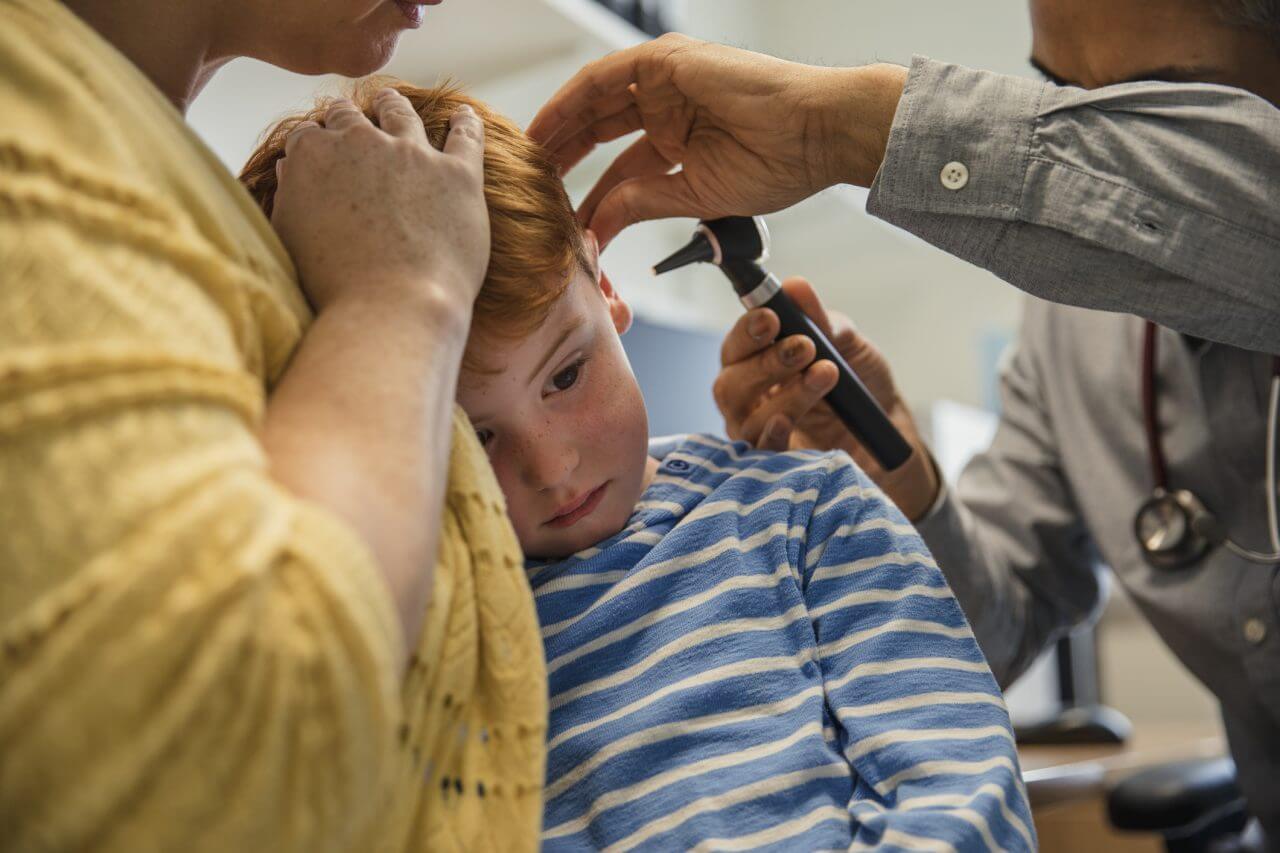Local, Convenient, Centered on You
Schedule an Appointment with a Baptist Health primary care physician and learn more about types of ear infections.
Get Started
There are many types of ear infections. The one that most people are familiar with is called acute otitis media. Common in children, it’s a viral or bacterial infection in the air-filled space behind the eardrum where the vibrating bones of the ear sit. Ear infections cause inflammation, accumulation of fluids and accompanying pain. Generally, ear infections aren’t serious, and often a “watchful waiting” approach is taken to see if the condition will resolve on its own without antibiotics.
Double ear infections, in which both ears are affected, may have more severe symptoms. Often the pain is more intense in a double ear infection and more aggressive treatment is recommended.
Another type of ear infection, which is more common in adults, is otitis externa, or what’s commonly referred to as swimmer’s ear. It’s an infection of the outer ear that occurs when water gets trapped in the ear and the bacteria and other microorganisms it contains begin to multiply, causing pain. Swimmer’s ear is typically treated by carefully cleaning the ear canal and using ear drops that inhibit the growth of the bacteria.
The symptoms of ear infections tend to come on quickly. In children, ear infection symptoms can include:
In adults, ear infection symptoms can include:
Ear infection causes can include anything that produces swelling or blockage of the eustachian tube, the passageway that connects the middle ear with the nasal cavity. For example:
In addition to the symptoms noted above, certain ear infection side effects can occur, including:
It’s important to talk with your doctor promptly if your child is under six months of age and has any of the symptoms above. If they’re older than six months, contact your doctor if they have symptoms for more than a day, if they have severe pain, if they’re irritable or have trouble sleeping after a cold, or if you see fluid or pus draining from the ear.
To determine if a child has an ear infection, a healthcare provider will look into the ears with an otoscope, an instrument with a magnifying lens and a light. Primary ear infection signs include:
To determine if an adult has an ear infection, the doctor will ask about the typical ear infection side effects and also examine the ears.
Ear infections can resolve on their own, so the focus of ear infection treatment initially may simply be monitoring the infection and recommending ear infection pain relief such as over-the-counter medication is taken, as directed, and applying a warm cloth to the ear. In many cases, however, antibiotics are required. Either way, it’s important to have the guidance of a doctor in order to find the appropriate ear infection cure, as an unresolved ear infection can cause serious problems and ultimately damage hearing.
Ear infections are often painful and can cause serious problems if they linger. But your doctor can provide the help you need to ensure they’re resolved in a timely manner.
Schedule an Appointment with a Baptist Health primary care physician and learn more about types of ear infections.
Get Started